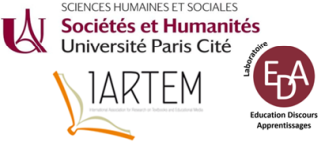The textbook has been, since the end of the 16th century, the didactic material par excellence, both for teachers and students, at all educational stages.
According to Martínez-Bonafé (1995), curricular materials determine a large part of the schooling activity, playing an essential role in the planning and development of teaching and learning processes. This is why it is important and necessary for them to meet a series of technical quality criteria (image characteristics, animations, texts, sound, etc.), which, in turn, meet pedagogical quality criteria: educational purpose, degree of innovation, ease of use, suitability for the target group, didactic versatility, attention to diversity, adaptation, etc.
Thus, we are faced with constantly evolving resources that must respond to the different historical periods in terms of teaching methods and strategies, teaching role, student characteristics, educational objectives and content, but also the values and counter-values of the society of the time.
This research analyses three textbooks for the 6th year of Primary Education and Basic General Education (EGB), produced by three different Spanish publishers and used in the subject of Natural Sciences in the 1980s, 1990s and 2000s, following the legislative and social changes in the Spanish education system.
The main objective is to find out how issues related to climate change and care for the environment are addressed, as well as other aspects related to the representation of cultural, ethnic, gender and physical diversity, also studied in works such as Ayaz et al. (2016), the typology of activities, the structure of the topics, the language and the images.
For this purpose, an adaptation of the evaluation guide designed in the national R&D&I project "Escuel@ Digit@l. La escuela de la sociedad digital: análisis y propuestas para la producción y uso de los contenidos digitales educativos" (Area-Moreira, 2020) as well as other specific guides on the analysis of textbooks in printed format, among which Parcerisa (1996) stands out.
In the analysis of the books, the results point to a substantial change in the importance given to content related to climate change and care for the environment, moving, in the oldest book, from a vision focused on the impact on human life in the face of a "slow and insignificant" process of change, to a critical perspective, in the most current one, centred on the causes, consequences and activities that can be carried out to act as a society in the face of the alarming situation in which we currently find ourselves.
As for the representation of diversity, in the materials published in the 1980s, most of the images depict young, fair-skinned people, while the language reflects an androgynous vision of the contents, always mentioning "man" as a representation of the human being. It is organised in sequential themes, which always follow the same structure: presentation of the theme, development of the contents, activities, reading or research and, finally, concepts for a scientific vocabulary. In the most current books, the images often depict people of different ethnicity, gender and age. A more respectful and inclusive language is advocated, which, although it sometimes uses the masculine, stands out for using the first person plural, such as: our, we have, etc. In addition, the images, when they do not deal with specific content in which it is necessary to distinguish between genders, the human figure is represented in a non-binary way. The book is also structured in units, although these are more flexible, including a section on Contents and another on Techniques and Activities, which includes research projects and more transversal tasks. The aim is not only to acquire the contents passively and memoristically, but also to reflect and work on them.
Even so, it is concluded that the image of the family is still traditional and the gender perspective can still be improved in terms of professions, as pointed out by Aguasanta (2022). Finally, it would be necessary to give children a more active role in taking action to curb climate change, reduce the ecological footprint and implement the Sustainable Development Goals, deepening the representations and narratives that contribute to full integral development.
- Poster

 PDF version
PDF version

